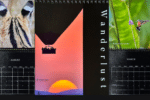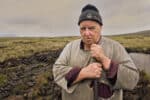Recently was in Hawaii, which is always a treat. It was even more so in that Annie and I were invited to teach a photography workshop at the fabled Four Seasons Hualalai Resort, a jewel on the Kona Coast of the Big Island and always ranked as one of the top resorts in the world. After many years in this business, logging millions of miles in the air and staying at many, many hotels of, well, varied reputations, teaching at the Four Seasons was a dream. Just walking around the lush grounds, you stumble into pictures. Many thanks to the folks who came to the workshop and to the amazing and creative staff at the hotel!
A photographic staple of visiting Hawaii is a session with a fire knife dancer. Always hard, playing with fire, photographically. Tough, sometimes, to know exactly what to do when a big part of what you are trying to expose for is whirling like a dervish. You need a measure of darkness and simplicity in the background, not to mention pictorial eloquence. A darkening sunset sky is the perfect answer. You need to expose for the flames, but not too much. Fire goes from orange to white in the blink of an overlong shutter speed. And you need to have a measure of sharpness to the dancer. Tough to do when you use the actual fire knife as your principal source of light. The fire and the dancer are moving, and you need something to freeze the action. Enter flash.
White light flash, thrown from the hot shoe of the camera, ain’t gonna cut it. White light is an intruder here, out of color sync with the romantic color palette of fire and Pacific sunset you are painting with. Frontal light also means flat light, generally, and you want some shadows to enhance dimensionality and mystery. Hence, a light from the side, gelled warm, is called for. The above was shot with a single Nikon SB-5000 Speedlight, off to camera left, on a simple Manfrotto stand, and I am controlling it with the WRR-10 radio transceiver. Pretty simple, really. The above was shot at 1/60th @f2.8, ISO 400 on a Nikon D5.
I did a shot some years ago that became the cover of a book, The Hot Shoe Diaries. Different time, different dancer, different camera, but the technique is basically the same. A raw, hard, gelled flash, off camera, to give me a chance at sharpness and to define the dancer. Fire is twirling on the opposite side from the flash, thus ensuring there is some sort of lighting activity occurring on both sides of my subject. The driver for the exposure solution is the sky, in many ways. You have to have density in the sky to set off the fire. If the sky is too bright, it will blow through the fire, potentially rendering it almost invisible. This was done on a Nikon D2X at 1/40th of a second @f6.3, ISO 100. The reason for the beefier f-stop and lower ISO in this one is that it was shot a bit earlier in the sunset, and the sun had just tipped below the horizon. The sky was still fairly bright. On the up top of the blog shot, I was teaching, and only took over the camera at the very end of the sunset arc, and really had to open up a bit to squeeze the dregs of color and detail out of the deepening sky.
Step by step:
Observe the dancer. Figure out which is his better hand. Most of these guys are so good, they can put the fire knife where you want it.
Get near the water. This will give you some tiny bit of highlight in the background, and not absolute darkness. It will also assure you of a clear throw to the western sky.
Position your light, gel it, and do some testing. You will be shooting relatively slow shutter speeds, and the flash will help you retain sharpness.
Start before the sky gets too dark! That was my issue with the picture up top. If you have to use a seriously slow shutter speed to get detail in the sky, the fire will become white. It is quite bright and needs to be managed with care.
Shoot a lot of pictures! Give the dancer a break and let them rest, but once they start twirling, go for it. If you can position your flash relatively close to your subject, you will drain less power with each exposure, thus hyping your recycle rate. That way you can rat-a-tat, shooting lots of frames in series. You never can tell when the flying flame might obscure the dancers’s face, or be otherwise uncontrolled. So, shoot a lot.
And, be careful playing with fire. :-)))
Quick note….fingers crossed! We will hopefully do workshop again next year! It was a hit, so stay tuned for dates here on the blog!
More tk….















Awesome shot. I am a proud owner of the Hot Shoe Diaries. Excellent book. If you don’t own it, get it.
These areally are beautiful! I love the use of color and light. Breathtaking!!
Great informative post! Really wish I could have hopped over to the Big Island to attend, but unfortunately it was WAY out of my budget this year. How about coming over here to Maui sometime Joe? That’s the problem with living on this island – nobody wants to come here to do workshops. 😉
It’s impossible how many details are taken here in consideration. Catching the light before it goes dark is really hard, because of weather changes (clouds mostly) It may be a relatively short period to maneuver in. And time is really short here!
Thanks for the tips, Joe! I happen to be friends with a number of really awesome fire spinners and I’ve been wanting to work with them so this came at just the right time. 🙂